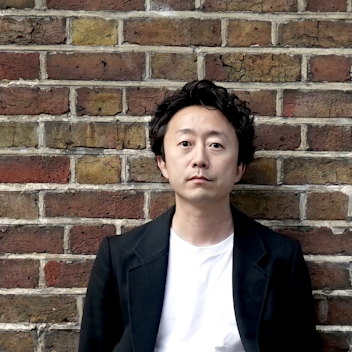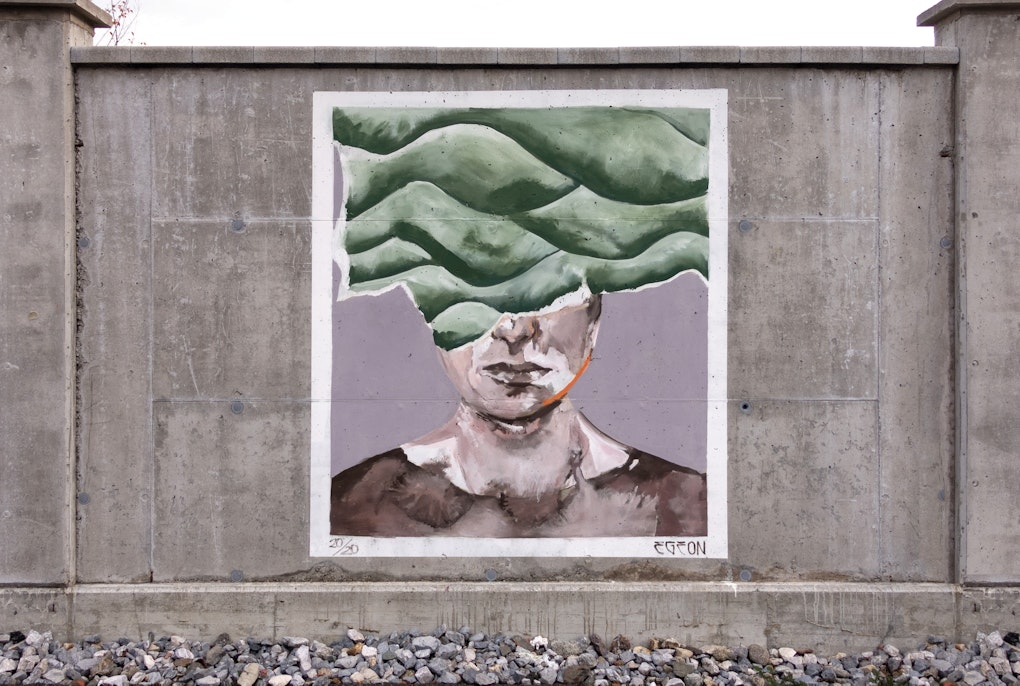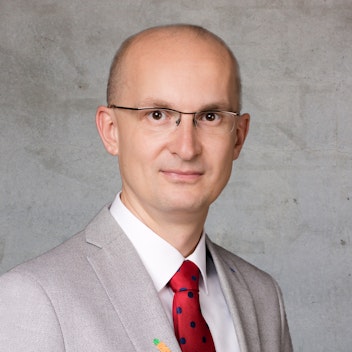
„Reisen ist immer auch der Weg zur Veränderung“
 Valeria von Miller
Valeria von Miller
It is said that the history of war is the history of media. In other words, war is represented by the media format prevalent at the time. New York Times columnist Thomas Friedman coined the term "TikTok war" for the Ukrainian invasion in February, and other publications followed suit. The same is true for the COVID-19 pandemic. During the pandemic, technology media such as social networking services framed the audience's perception and hijacked their thoughts and behaviour. Thus, the infodemic became the downside of excessive technology media representation. By studying the practices of science journalists, including BBC, WIRED.com, and other media outlets at the forefront of the infodemic, this article analyses the practice and efficacy of science journalism in the COVID-19 pandemic and suggests strategies to prevent a future infodemic.
An infodemic is often considered a temporary disaster of information. However, an infodemic is not a temporary phenomenon or an acute disease of sorts, but a chronic disease of the digital media environment. This is illustrated by the experience of science journalists during the early to mid-term of the COVID-19 pandemic in 2020–2021. For them, it was a time to fight misinformation, a time to rethink the media environment and a time to reframe journalism standards.
Traditionally, one of the roles of a science journalist is a scientific interpreter. Since there is no definition of science journalism, it is considered as a genre of journalism which deals with scientific achievements and innovations. Therefore, science journalists spend their time making scientific knowledge understandable and interesting for their audience. In the often-lengthy process of interpretation, it is a common annoyance amongst science journalists that science stories often fail to engage, in other words, readers are left decoding specialized scientific knowledge.
However, being the most prioritized news during the pandemic, science stories became the most engaging news globally. During the pandemic, science journalism conveyed news that was essential: what is the SARS-CoV-2 virus, how does the virus spread, how to prevent infection, and when and how it may end. In short, science journalism experienced a drastic change during the pandemic.
Although the event of science journalism coming to the forefront was good news, it came with unwelcome news in tow. Due to the infodemic, the audience was exposed to a bigger problem than being left wondering about scientific facts. Misinformation spread faster than the scientific information essential to save lives, and complacency was fostered, regardless of new case spikes. Research showed that the former US president, Donald. J. Trump, was the most influential spreader of misinformation in 2020. The pandemic, ironically, posed a tougher challenge for science journalists than ever before.
Based on the hypothesis that the infodemic is the downside of the current media environment, largely created by digital technology, I started research on science journalists at the forefront of the infodemic from global news media outlets such as BBC, WIRED.com and The Atlantic to local news media. The result showed that these current affairs outlets do in fact address the problems of the current media environment and their strategies would be useful to implement to prevent future infodemics. Moreover, their practice could be the key to reimagining the role of journalism as a whole.
It was one of the toughest challenges for science journalists to debunk the myth of complacency. In fact, research estimates that more than half of all transmissions arose from asymptomatic individuals. Therefore, preventing people from complacency, witnessed in no-maskers and anti-vaxxers, is one of the crucial roles of science journalism amidst the infodemic. For example, on 25 November 2020, a science story was featured on the US news programme, CBS News. The story was written by science journalist, Roxanne Khamsi, and published on WIRED.com, titled "This Pandemic Must Be Seen". In the article, with various images, she argued that seeing is believing. According to Khamsi, realistic visual information such as video footage of doctors struggling in hospitals and patients suffering should appear in the media to make people realize that the pandemic was not "a faraway problem".
"Science journalism has become more communicative than before because, reflecting the increase of public attention, current science journalism inevitably interacts with other fields such as politics, culture, and lifestyle under the pandemic", Khamsi explained in an interview I conducted. Based in Montreal, Khamsi’s articles have appeared in the US edition of WIRED, The Atlantic, and several other publications.
Khamsi’s articles argument was based on personal experience. Being a medical journalist covering coronaviruses since 2004, her most terrifying moment during the COVID-19 pandemic was delivered by some video footage that appeared on her social media timeline at the end of January 2020. Recorded on a smartphone, the video showed an exhausted medical worker, who treated COVID-19 patients without sleep, screaming due to her helpless situation. On seeing this video, Khamsi took the virus threat more seriously. ‘Because we are visual creatures,’ she said in the interview I conducted, "I felt that history would repeat itself if we do not see this pandemic".
Richard Fisher, a senior journalist at BBC Future and BBC Global News, based in London, UK, had this to say: "As for me, knowing there’s a 50-50 chance I received a dose of a promising vaccine provides a small comfort, but it certainly won’t change my behaviour or my choices". These words appeared in his article, titled "Coronavirus: What I learnt in Oxford’s vaccine trial", published on 22 July 2020.
Fisher volunteered for a clinical trial of a COVID-19 vaccine and was one of the first to participate in the trial. His articles were written with real descriptions, allowing the reader an insight into the clinical trials allowing the audience to become highly engaged - at the time of the Oxford vaccine trial, the mechanism and the efficacy of the vaccine was uncertain. The article described how the vaccine worked, the process of the clinical trial and the methodology used to assess the vaccine's efficacy. At the same time, it was written with humorous episodes, such as "I couldn’t help but smile knowing that some participants would be asked to submit faecal samples", making it a fascinating read for those waiting for the vaccine. In the interview conducted on 7 December 2020, I asked him the purpose of the storytelling method used in the article.
"I practice a deeper and wider coverage of the daily news. Daily news is like 'looking through a keyhole' of facts. In other words, we are looking at this pandemic from a very limited perspective. I see it as my role to broaden the dimensions and contextualize those daily news stories and provide a bigger picture for the audience", Fisher said in the interview. Simply put, with the article, he connected the dots of fast news to form lines of contextual understanding in the pandemic.
The infodemic could be considered an opportunity to redefine the role of journalists and online algorithms. Unlike Khamsi or Fisher, online algorithms spread enormous dots of information tailored to individual preferences. As a result, in the infodemic, people suffered from the echo chamber effect - misinformation spread like a game of Chinese whispers. According to the Washington Post, the existence of this long-argued phenomenon was confirmed in an internal investigation conducted by Facebook. The investigation employed a survey to assess the large-scale diffusion of ideas that contribute to vaccine hesitancy within Facebook's social network. The results showed that a small number of users, particularly those who exaggerate concern about the vaccine's side effects, were responsible for the spread of skepticism about the vaccine.
According to the Washington Post, Facebook data scientists broke down Facebook's U.S. users, groups and pages into 638 population segments of at least 3 million people. They then tried to identify particular types of groups that have vaccine-hoarding opinions. The investigation showed the fact that just 10 out of the 638 population segments were associated with 50 percent of total vaccine skepticism content on the platform. Moreover, in the most vaccine hesitant population segment, it was revealed that just 111 users are associated with and responsible for half of the entire content relating to vaccine hesitancy. This finding suggests that particular communities within Facebook’s social network are especially susceptible to this echo chamber effect and may be causing the spread of harmful content over the platform.
An important task of journalism in the future would be to protect people from these negative aspects of the media that foster complacency to worsen situations.
During a pandemic, misinformation can not only harm but even kill people. One study assessed the extent of the influence of mass media misinformation on the health of the audience. Researchers examined two types of news programs, "Hannity" and "Tucker Carlson Tonight", two of the most popular cable news shows aired back-to-back on Fox News in the US. Through quantitative research methods using mathematical models, they evaluated the influence of these two different coverages of COVID-19 on viewers' preventative behaviours.
The study found evidence that viewers of Hannity changed their response behaviour later than the rest of the Fox News viewers. Meanwhile, viewers of Tucker Carlson Tonight changed their behaviour earlier. Quantitative evidence proved that during the early phase of the pandemic, the degree of exposure to Hannity was one of the reasons for increase in the number of total cases and deaths. Thus, researchers concluded that misinformation on mass media crucially influenced COVID-19 infection rate and related deaths.
Reacting to the above situation, during the infodemic, science journalists had the essential function to combat misinformation and protect people's lives. "It's like a never-ending game", Martin W. Angler, an eminent science journalist working in Bolzano in Italy, reflected on the battle against disinformation regarding the new coronavirus in an interview that I conducted with him on 23 December 2020.
"Problematic misinformation is being spread by powerful lobbyists and well-known personalities in the region, including the promotion of homoeopathy, which has no scientific basis. Furthermore, many of those spreading misinformation are both 'anti-mask' and 'anti-vaccine' and are often opposed to scientifically correct ideas. I have identified this situation as an event leading to a social health crisis and am addressing it through investigative journalism, fact-checking and other methods. But really this is a never-ending game", Angler said, looking a little weary.
Angler has written for internationally recognized media outlets, including the BBC and Scientific American. However, during the pandemic, he chose the local media in his hometown of Bolzano, Italy as his main battleground where he was in "close combat" misinformation. The ironic reality he faced is that science journalists, dealing with social crises, were not socially protected.
"Journalists who try to debunk misinformation are sometimes targeted by hoaxers. They will do everything possible to discredit journalists, whether in public or not. For journalists, whose public credibility is important, it is almost torture. On top of that, fact-checking misinformation involves a great deal more work than normal reporting. Science journalists are forced to fight in a situation where they are not financially or socially protected. That's a serious social problem for the function of journalism, which is to combat misinformation", Angler said.
Angler highlighted the reality of science journalists fighting misinformation and raised his voice for their social protection. Correcting misinformation requires rigorous work in terms of time and cost, including in-depth research to confirm facts and interviewing experts for informative and socially relevant reporting. Despite the obvious impact of misinformation on public health status, science journalists who respond to correct it are not socially protected. This is the harsh reality.
Fisher also explained his strategy to address conspiracy theory in his interview. "Not to make things worse, I am always trying to put myself in the shoes of other people". He believes that empathy is an important skill for journalists, who must critically examine their writings with consideration for the audience's interpretation. "In the infodemic, journalists' empathy is extremely important. What I mean by empathy is not a kind of care and compassion but an ability to stand in the shoes of somebody who is reading the article. It is because when people try to say or write something related to the pandemic, they tend to use arguments that work for them. It could be a political argument, religious faith or science like us. The important thing is knowing that although I am someone who believes in science, someone else might not. Therefore, when I am writing, I always try to ask myself, what if someone else does not believe in science?", Fisher said.
Fisher further explained that if a journalist merely provides a fact to stop the propagation of conspiracy theories, the audience integrates the fact into their conspiracy theory without corrections. This is called "backfire effect"; a phenomenon where the correction accidentally reinforces the misperception rather than rectifying it. The backfire effect is a scientifically-uncertain phenomenon and remains under debate.
Additionally, referring to the paper "The Oxygen of Amplification" by a digital media folklorist Whitney Phillips, she argued that in certain cases journalism may amplify misinformation and conspiracy theory without intention.
For example, a journalist criticizes extremist views, such as alt-right groups. However, the report often results in their promotion by giving them more visibility. Phillips argues, through her report, that journalists and news reporters should recognize how conspiracy theorists or extreme right activists are likely to hijack journalism.
In fact, the idea of the alt-right group is amplified by media coverage even if that is not the intention. Similar things are likely to happen during the infodemic; therefore, journalists need to examine their coverage critically so as not to provide oxygen to the fire of false information.
In an infodemic, it is easy to imagine that balanced information consumption would ease our mind as a balanced diet would improve our health. However, how can this be realized?
In my research, in addition to science journalists at the frontline of the infodemic, "slow journalist" Marcus Webb was interviewed. Webb is the co-founder of the magazine Delayed Gratification that has over a decade’s practice in slow journalism. Slow journalism is a style or trend of journalism which is often considered to be an alternative to fast online journalism and is intended to foster well-contextualized storytelling.
The first issue of Delayed Gratification was published in January 2011. Since then, Delayed Gratification has been published every three months in printed and digital editions for subscribers or sold in bookstores. Notably, the magazine celebrated its anniversary in 2020 with more than 10,000 subscribers.
In an infodemic, overwhelming data and figures flood the media and people often can’t see the wood for the trees. This is where infographics can help cut through the clutter. Delayed Gratification provided two types of science journalism amidst the pandemic. One was in-depth and long-form journalism by journalists collaborating with experts. Another was the characteristic and unique approach realized by infographics created through deep research based on data from reliable sources and meant to engage readers visually in the social context. "For example, in the issue #39, in a feature named 'The days the Earth stood still'", Webb said, "we tried to figure out the correlation between cases and restrictions on a global scale using an infographic. We used data by the University of Oxford and created a chart that illustrates how countries set about lockdown. In the process we reached out to the University of Oxford, and they were really happy to work with us".
Interestingly, the infographics in Delayed Gratification were designed to enable readers to understand the big picture from a macro level and find detailed information from the micro level.
As mentioned initially, the history of war is the history of media. The Gulf War was called the "CNN war" due to the role played by the cable television network in broadcasting the war to the entire world. Same can be expected for the history of the pandemic. What will we recall about the infodemic in the history of media? This question is deeply related to the aim of this article: exploring how we can prevent a future infodemic. The infodemic is a result of fast availability and overconsumption of information. Therefore, the cure is a healthy diet of information consumption in our daily lives.
In the interview, Fisher mentioned that one of the challenges of journalism is the current structure of the media. "Once upon a time, media was a single channel, which meant that reliable news media such as The Guardian or BBC provided straightforward news to its audience. However, in the current media environment, defined by its multi-channeled aspect, the audience regards renowned news media as an equivalent news source to blogs, Twitter, and other online sources", Fisher said.
In our so-called digital age, the media has reconstructed and gone on to lose its own discipline. As a result, we can read The Guardian, jump to London’s Evening Standard, and then watch BBC, Sky News, CNN, and Fox News on the same social networking services such as Facebook. Current online media environment allows the audience to prioritize the value of news based on their own perspectives and the algorithm used by social networking services.
Digital technology and social media partially foster ‘participative journalism’ or ‘citizen journalism’ in order to make news collaborative; however, the downside is obvious. Not only is too much shallow news being circulated in this media environment but it is happening at an enormous speed, eventually provoking an infodemic. To react to this situation, ‘ I write deeper and of ten academic articles, ranging from science and technology to health for BBC Future which complements the up-to-date and breaking news' , Fisher said in his interview. In fact, working alongside a team that provides up-to-date and breaking news, which mainly appears as broadcast on BBC, Fisher contextualizes fast news into slow news and weaves a short-term view into long read articles that appear on BBC Future.
From the perspective of slow journalism, Webb pointed out the limitations of the current trend of fast journalism: "Fast and diffused misinformation cannot be corrected only by fast journalism". Webb also mentioned that the infodemic related to COVID-19, represented the limitations of online fast journalism. "The problem of fast journalism is inevitably being fast. For example, early in the pandemic in the UK, it was considered that COVID-19 was not a serious disease, and the mask was not effective, which turned out to be false later", Webb said.
Using the example of food, Webb described the imbalance in modern information consumption, "in the information age, staying only in fast journalism and consuming online information so quickly makes people as unhealthy as people who always eat fast food and have serious health problems". This is the reason Delayed Gratification provides informative, well-examined, contextualized stories. However, he clarified that the aim of the magazine was not to fight against fast journalism. "Slow journalism does not both conquer and fight against fast journalism. We are showing alternative journalism. Delayed Gratification contributes to making people's information consumption healthy", Webb said. It is interesting to note that Fisher at BBC and Webb at Delayed Gratification share similar opinions.
Ironically, the infodemic is a mirror of the pandemic; research suggests that an adequate diet and nutrition are essential for an optimal immune response to COVID-19. The same could be said for information consumption. Long-term, slow information consumption is healthy for our daily lives and could help prevent a future infodemic.
This article is based on the research “Science Journalism in The Infodemic related to COVID-19 Pandemic in 2020, its Challenges and Evolution” (2021) conducted by the author.

This content is licensed under a Creative Commons Attribution 4.0 International license except for third-party materials or where otherwise noted.

 Valeria von Miller
Valeria von Miller






 Bartosz Stefan Michalski
Bartosz Stefan Michalski